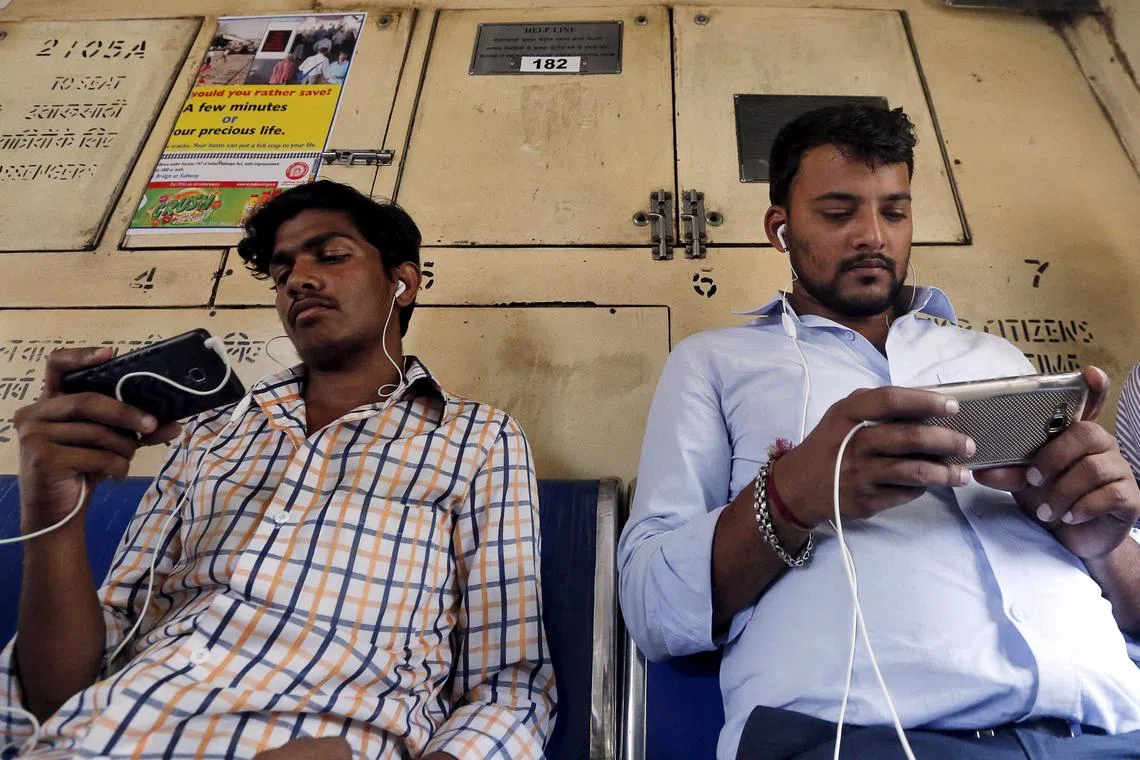India launches home-grown mobile OS to rival Android
Sign up now: Get insights on Asia's fast-moving developments

India's home-grown BharOS is at its nascent stages of development, though its makers say it is more secure than Android.
PHOTO: REUTERS
Follow topic:
BENGALURU - The Indian government has unveiled BharOS, a home-grown mobile operating system (OS) that is being pitched as the country’s answer to Google-owned Android and Apple-owned iOS, the world’s dominant mobile operating systems.
Developed at a start-up incubated at the Indian Institute of Technology (IIT) Madras – one of the country’s top engineering colleges – BharOS is a government-funded project to develop a free and open-source OS for use in government and public systems.
A mobile OS is a software that is the core interface on smartphones, such as Android by Google and iOS by Apple.
After testing BharOS at a televised press briefing on Jan 24,
“Now we have to work on further development, especially on the app ecosystem of BharOS and the chipset that has to become aatmanirbhar (self-reliant),” Mr Vaishnaw added.
The native mobile OS comes after India won an antitrust claim against Google.
The Indian market is dominated by Google’s Android OS, which is on 96 per cent of all smartphones. In October 2022, the CCI ordered the company to change the Android OS to give smartphone users more freedom to choose the apps they want.
Google appealed to the Supreme Court to block the fine,
In this context, BharOS’ endorsement by the government signals India’s ambitions to reduce its dependence on foreign OS in smartphones and promote the use of locally developed technology and chipsets.
Officials in the technology ministry said it would also ensure that competitors have a fair chance to succeed against Silicon Valley heavyweights.
BharOS is at its nascent stages of development, though its makers say it is more secure than Android.
It was developed by JandK Operations (JandKops) and incubated by IIT Madras’ Pravartak Technologies Foundation, a non-profit company funded by the government’s Department of Science and Technology under its National Mission on Interdisciplinary Cyber-Physical Systems. The mission aspires to put India on a par with countries that currently possess such capabilities.
JandKops director Karthik Ayyar said BharOS, which stands for Bharat Operating System (Bharat is the Hindi name for India), offers automatic downloads of updates, gives access to a curated list of apps from organisation-specific app stores, and does not come bundled with apps, allowing users more control over the permissions.
Mr Ayyar said the OS is being used by some organisations that have stringent privacy and security requirements. But he added that it could soon be installed in commercial handsets too.
IIT Madras director V. Kamakoti said the app focuses on giving users “more freedom, control and flexibility to choose and use only the apps that fit their needs”.
BharOS is not the first indigenous OS. In 2006, the Ministry of Electronics and Information Technology developed Bharat Operating System Solutions, or Boss, and in 2023, IIT graduates made Indus OS, but neither had many takers.
However, the tech industry expects BharOS to fare differently because it comes in the context of a much bigger tech ecosystem in the country and the opportunity created by the antitrust ruling against Google.
Mr Rohan Verma, executive director of Indian navigation firm MapmyIndia, said BharOS represents a new opportunity “to end Google’s Android monopoly”.
India is taking a page out of China’s playbook in developing its local tech ecosystem to fuel the economy, but it will not be an easy road ahead. Unlike China, the South Asian country does not have an array of local apps for e-mail, navigation, chats and shopping.
For instance, Gmail is the default e-mail service for most Indian users and if the app store on BharOS does not carry Google apps, there would be few takers for the home-grown OS. Technology experts also believe that Google or Meta are unlikely to port their first-party apps onto a localised app store.
For BharOS to emerge as a true competitor to Android, India will also have to convince smartphone manufacturers to launch phones with the local OS. But the majority of smartphones sold in India are made by Chinese manufacturers such as Xiaomi, Redme and Oppo, who may not pre-install an Indian OS.
India has more than 1.2 billion mobile phone users, of which over 750 million use smartphones.


